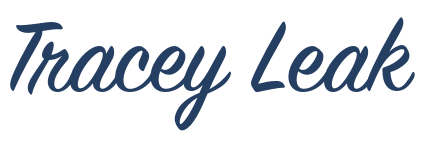It doesn’t matter at what stage you are in your business, this exercise of knowing your numbers is vitally important for EVERY business owner. For business owners that are newer to business, this will help you to grow your business and keep you accountable to doing what it takes. For those that have been in business a bit longer, it might get you to think about your business in a different light.
REMEMBER: Our goal is to keep things simple. This is not an activity to produce a spreadsheet, this is an activity that you could do anywhere, at anytime, as long as you have a piece of paper and a pen.
The numbers that I like to do with business owners is what I call ‘Back of an envelope’ numbers. That means they are not exact to the last cent. We may ‘guestimate’ a few things. They won’t be way off track, but they are not Accountant verified numbers or balanced to the last cent. We want to get a feel for our numbers and what we need to do to build our business to the next level.
As a note, as I’m not an accountant, I don’t include tax in my example calculations. The other challenge is that I have clients all over the world – all with different tax rates – so it is impossible for me to give this as an example that fits everyone.
So we have a pen and paper (do you? You could be doing your action step as you read this …. ).
The first thing we want to do is work out how much profit you would like to make in your business in a year.
If you are new/newer/not yet profitable in business, then I’d suggest you start with a profit amount that is not the dream profit, but the amount of profit that you go, “Hey, I’m making enough money from this business to make it worthwhile to be in business”. This is a different amount for everyone.
If you have been in business for sometime, you might instead of thinking of total profit, you might write down how much EXTRA profit you would like to make in the next year.
So for my example today, I’m going to say we want to make $50,000 profit (be that total or extra – your choice! And remember, you can be doing your own amount at the same time).
The next question we need to ask is what revenue or what turnover do we need to do to make that amount of profit. What expenses do we need to add on to that profit amount? This is where you might do a little ‘guestimating’. For example, you might say, well my phone bill is different every month. So guestimate it or think what is it on average or round about each month? Just write out – on your sheet of paper – all of your expenses and then add them up for the year. Remember also the cost of goods if you are selling a product or holding stock.
If you have been in business for a while, this should be an easy exercise because you should know your profit margin. So if your profit margin is 50%, then to make $ 50,000 a year, you need to have a revenue of $100,000.
Remember, these are back of the envelope numbers – it is not about every last cent.
So in our example, let’s say we need to turnover or have a revenue of $ 75,000, so that after expenses, we have $ 50,000 or profit.
My favourite saying is ‘How do you eat an elephant? One bite at a time!’ That’s what we need to do with our numbers. A yearly revenue is just too big to go after. We need to break it down. I suggest you break it down to a billable cycle for your business. So if customers pay you on average monthly, it is a monthly revenue. If you are say in a café, then it would be a daily revenue. For ease in this example, I’m going to say monthly, so …..
Yearly Profit $ 50,000
Yearly Revenue $ 75,000
Monthly Revenue $ 6,250
It is much easier in your business to think in terms of ‘customers’ than it is in ‘dollar figures’ when building or growing the profit of your business. So what our next step is to work out what an average customer is worth to us in our billable cycle. If you are newer to business, think about your average customer. If you are looking to expand, grow your profit to the next level for more established business, you might be thinking about a new client or favourite client you want to go after or new market segment.
In our example, let’s say an average customer in this particular business spends $250 a month with us. That would mean, to have a monthly revenue of $6,250, we would need 25 customers a month.
Again for ease of this example, let’s say that when we get a customer at $250 a month, we are going to say that this is a retainer type of situation, that these clients pay us every month – repeat business. I always highly recommend for business owners to find repeat business because you don’t have to then go out and find all your customers every month, you will have lots that buy from you every month.
So once we know the number of customers we need, we need to work out how we are going to find them.
So if we said, we need 25 customers, who are on a retainer (eg. they pay the business $250 every month), how many ‘sales appointments’ would we need to have to find those 25 customers? What is your conversion rate? In this example, let’s say the conversion rate is 33% – that is, for every 3 prospective customers you talk to, 1 becomes a customer. This means you would need to sit with 75 prospects to get 25 customers.
Yearly Profit $ 50,000
Yearly Revenue $ 75,000
Monthly Revenue $ 6,250
Average customer $ 250
Customers needed 25
Conversion rate 1 in 3 (33%)
Number of prospects 75
So how quickly do you want to ‘build’ to that profit amount? It doesn’t happen instantly, so what time frame are you giving yourself to go out and find 75 prospects and sell to them? For our example, what if we said 9 months or 36 weeks? If we divide 75 by 36 we get approximately 2 appointments a week. That means we need to do 2 sales appointments a week for 36 weeks to get 75 customers. At this point, you just ask if that is realistic? Could you do 2 sales a week in this business? If it is, continue. If not, maybe change your timeline a little – slow down or in some cases – speed up!
So now we know that we need to do 2 sales appointments a week to build up to having 25 clients on ‘our books’ over the next 9 months (remember, business is not linear, you will have ups and downs over this time), our next question is, how do we get 2 sales appointments a week?
What marketing do you need to do to get 2 sales appointments a week? Maybe you know if you go to a networking event every week, you will, on average get 1 lead. Perhaps you know that on average you will get 2 enquiries to your website which will give you ½ a lead a week (I know you can’t get half a lead, but you will only maybe get one every second week!). Maybe you will get 1 referral a month – ¼ a lead a week. You do some type of advertising that will produce 1 lead a week. I suggest you write out where your leads could come from and how many. You should count on MORE leads than you require, because marketing doesn’t work the same each and every week, so it never hurts to do MORE marketing than required.
So our numbers look like this:
Yearly Profit $ 50,000 Leads for 2 sales appointments/week
Yearly Revenue $ 75,000
Monthly Revenue $ 6,250 Networking – 1 event/week – 1 lead
Average customer $ 250 Website – 2 enq/month – ½ lead
Customers needed 25 Referrals – 1 / month – ¼ lead
Conversion rate 1 in 3 (33%) Advertising – 1/week – 1 lead
Number of prospects 75
Time to build 9 months = 36 weeks Total leads/week = 2 ¾ leads
Sales appts/week 2
Instead of focussing on the profit amount you want/need to make in a year, instead you now focus on producing those leads every week to get 2 sales appointments a week. You focus on keeping your conversion rate at 1 in 3 (or better) and that each customer on average is buying $250 a month from you.
It is far SIMPLER to think in terms of number of customers and what ACTIVITY you need to be doing, than it is walking around going ‘I need to generate $ 50,000 of profit!’
Before I leave you to do your numbers, I want to give you a little hint on ‘playing’ with your numbers…..
What if you could increase your conversion rate from 1 in 3 to 1 in 2? That means you work on your sales technique and you convert more customers.
Staying at the same profit amounts as in our example, to make $ 50,000 profit, instead of having to have 75 prospects, you would only need 50 prospects if your conversion rate was 1 in 2 instead of 1 in 3. That means instead of taking 36 weeks at 2 prospects a week, it would only take 25 weeks! That’s 3 months faster…..
Another item to think about, what if our conversion rate was the same, but instead of customers buying $250 a month from us, they bought $350 a month from us. That would mean instead of 25 customers buying $250 a month, we only need 18 customers buying $350 a month from us. At the same conversion rate of 1 in 3, we only need then 54 prospect appointments, which at 2 a week is 27 weeks – or 9 weeks FASTER than our original plan.
OK, I’m going a little over time now with our 10 minutes, but I hope you will forgive me on this one.
What if you did BOTH of these things? Increase your average customer spend from $250 to $350 AND increased conversion rate from 1 in 3 to 1 in 2…..
Original plan Increase Average spend & conversion rate
Yearly Profit $ 50,000 $ 50,000
Yearly Revenue $ 75,000 $ 75,000
Monthly Revenue $ 6,250 $ 6,250
Average customer $ 250 $ 350
Customers needed 25 18
Conversion rate 1 in 3 (33%) 1 in 2 (50%)
Number of prospects 75 36
Sales appts/week 2 2
Time to build 9 months = 36 weeks 4 ½ months = 18 weeks
That’s HALF THE TIME!!
The activity is the same, but you have halved the time. It takes no longer time to market to a prospect that might spend $350 compared to one that only spends $250. It takes no longer time to have sales appointments that convert 1 in 2 compared to 1 in 3. The sales appointment will still go for the same amount of time.
The activity is the same, but you do it BETTER!!
Here’s one more ‘what if’ for you…. What if you still did 2 appointments a week for 36 weeks, so 75 prospects, but you conversion rate was 1 in 2. That’s now 37 customers (I dropped the 0.5!). Then each of those customers spent $350 a month each. That would be a monthly revenue of $12,950. If we multiply that by 12 months that is a yearly revenue of $155,400. From our example above, our profit margin was 66%. If we just kept that margin …. That means our new profit would be $102,564! Double our original profit target. Still did the same work, same number of prospects, we just improved our sales conversion and how much the customers purchased, but double the profit! Same activity, just done better!
What could you do with your numbers?
ACTION STEP:
Pretty simple this week… what are your numbers?
Then, once you know your numbers – profit you need to make in a year or the extra profit you would like to add to your business in a year – why not have a play and see what would happen if you increased your conversion rate or customer spend.
Then, put a plan in place to make that happen. What could you do to increase your conversion rate? What could you offer to increase the average customer spend? Who are you targeting in your marketing?
I’ve just given you exactly what I work with clients on to help them grow their business.
YES, it really is that simple!





